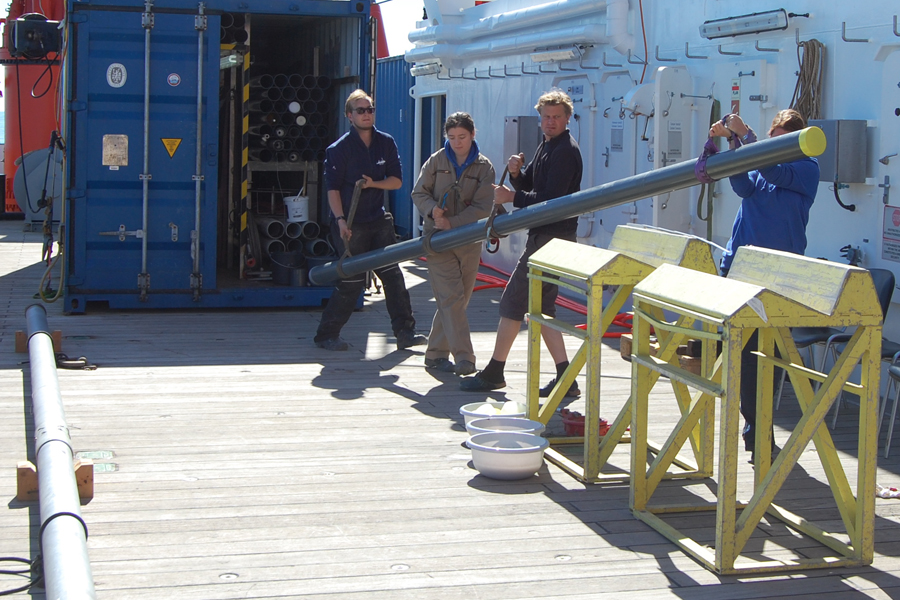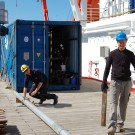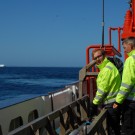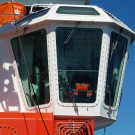Unser Decksteam arbeitet zusammen mit dem Decksteam der M.S. Merian hart, um uns die Beprobung des Wassers und der Sedimente zu ermöglichen. Dafür wird auch schon einmal um 5:30 Uhr aufgestanden. Die Expertise unseres Teams ermöglichte uns sogar 20 m lange Schwerelote zu fahren. Die in den tonigen Sedimenten auf dem Kanadischen Schelf komplett ins Sediment eindrangen. Aufgrund der Reibung innerhalb des Schwerelotrohres, waren die Plastikrohre, welche in dem Schwerelot stecken zwar nie komplett gefüllt, aber die von uns gewonnenen 16 m Sedimentkerne waren Rekord verdächtig!
Die bisher an Deck gezogenen 250 m Sedimentkerne liegen weit über unseren Erwartungen. So ging uns bereits die Spezialfolie für den Farbscanner aus. Aber eine Reise, bei der nicht improvisiert werden muss, ist nur halb so spannend! Also reinigen wir die verbleibenden Meterstücke der Folien nach der Benutzung, damit wir bis zum Ende der Reise weiterhin die komplette Kernbeschreibung durchführen können.
Unser Sediment-Team arbeitet noch immer unter Volldampf und wird von den anderen Arbeitsgruppen und der Fahrtleitung tatkräftig unterstützt, damit die verbleibenden Proben bis zum Ende der Reise sicher im Container verstaut sind.
[English]
Work on Deck
Our decks team and the decks team of M.S. Merian work hard together to operate our sampling equipment. In order to gain the best sediments and water samples, some days operations already start 6 a.m.
The expertise of our team even allowed us to operate a 20 m gravity core. The latter penetrated the clay rich sediments on the Canadian shelf all the way up to the top. The friction within the inner core of the gravity
corer never allowed that the inner core was entirely filled with sediments. Nevertheless the 6m of sediments we gained with this method is close to record-breaking!
The gained sediment cores of an entire length of more than 250 m exceed our expectations by far! Thus, we already were running out of the special foil that is needed for color scanning. But a cruise without improvisation would be only half as fun. Thus we are cleaning the residual foil and reuse it an be able to keep on with our core descriptions and scanning.
Due to the famous outcome of our coring, the sediment team has a lot of work and is supported as often as possible by the rest of the team, as the end of the cruise is coming by than everything has to be stored in the containers for being shipped back to our laboratories.
Janne Repschläger, CAU Kiel



